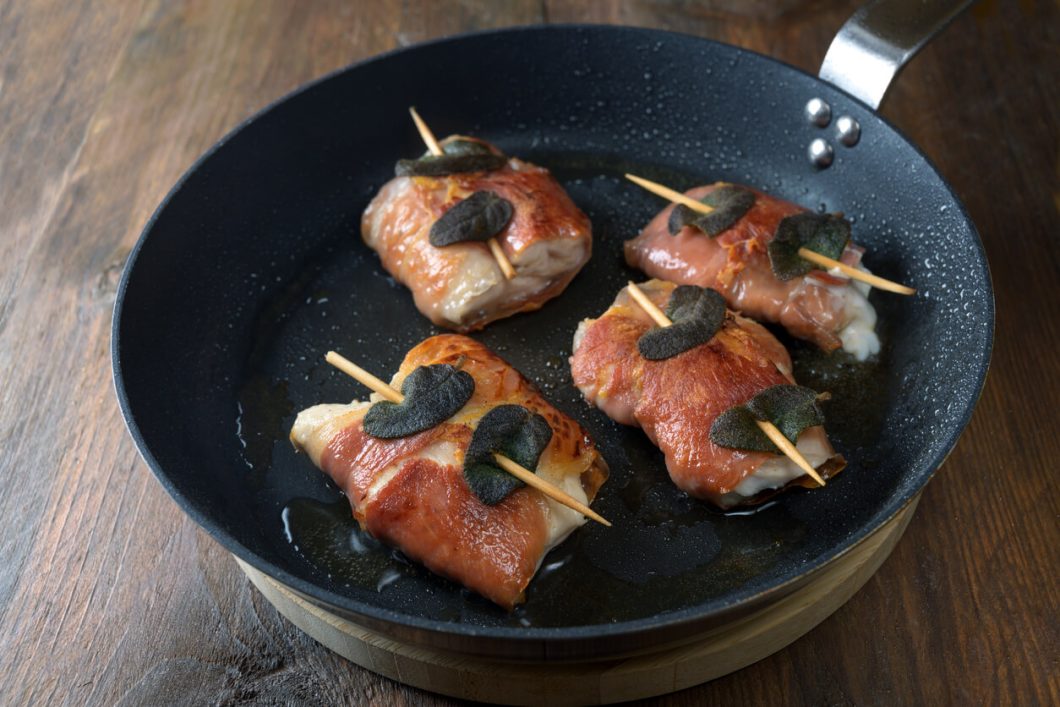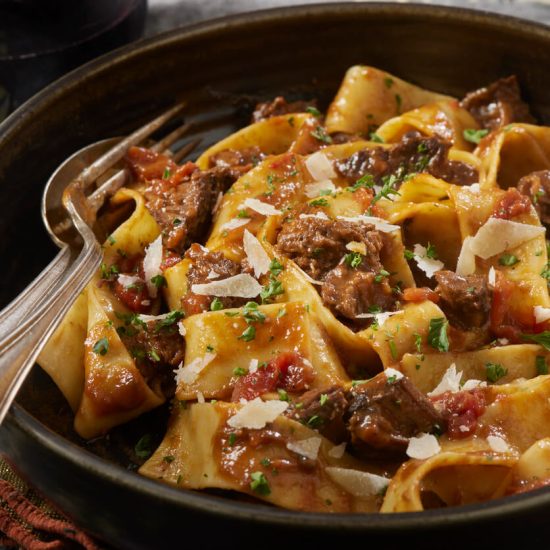Savor the authentic taste of Italy with our Chicken Saltimbocca, a classic dish that artfully combines the tender juiciness of chicken breasts with the rich flavors of sage and prosciutto. This exquisite meal is pan-seared to perfection, ensuring each bite is infused with the aromatic blend of herbs and the savory goodness of cured ham. Drizzled with a light and flavorful white wine sauce, our Chicken Saltimbocca promises a delectable dining experience that transports you straight.
Prepare the Chicken: Lay the chicken breasts flat on a cutting board. Season both sides with salt and pepper. Place 2 sage leaves on top of each chicken breast, then wrap each breast with 2 slices of prosciutto, securing the sage leaves in pla
Dredge the Chicken: Lightly dredge each chicken breast in flour, shaking off any excess.
Cook the Chicken: Heat the olive oil and 1 tablespoon of butter in a large skillet over medium-high heat. Once hot, add the chicken breasts, prosciutto side down first, and cook for about 3-4 minutes on each side, or until golden and cooked through. Remove the chicken from the skillet and set aside.
Make the Sauce: In the same skillet, add the white wine to deglaze the pan, scraping up any browned bits. Allow the wine to reduce by half, then add the chicken broth and simmer until the sauce has thickened slightly, about 3-5 minutes. Whisk in the remaining tablespoon of butter until the sauce is smooth and glossy.
Serve: Return the chicken to the skillet, spooning the sauce over the breasts to warm them through. Serve immediately with lemon wedges on the side.
Ingredients
Directions
Prepare the Chicken: Lay the chicken breasts flat on a cutting board. Season both sides with salt and pepper. Place 2 sage leaves on top of each chicken breast, then wrap each breast with 2 slices of prosciutto, securing the sage leaves in pla
Dredge the Chicken: Lightly dredge each chicken breast in flour, shaking off any excess.
Cook the Chicken: Heat the olive oil and 1 tablespoon of butter in a large skillet over medium-high heat. Once hot, add the chicken breasts, prosciutto side down first, and cook for about 3-4 minutes on each side, or until golden and cooked through. Remove the chicken from the skillet and set aside.
Make the Sauce: In the same skillet, add the white wine to deglaze the pan, scraping up any browned bits. Allow the wine to reduce by half, then add the chicken broth and simmer until the sauce has thickened slightly, about 3-5 minutes. Whisk in the remaining tablespoon of butter until the sauce is smooth and glossy.
Serve: Return the chicken to the skillet, spooning the sauce over the breasts to warm them through. Serve immediately with lemon wedges on the side.
Notes
Perfect Wine Pairing
For Chicken Saltimbocca, a crisp and acidic white wine that complements the prosciutto’s saltiness and the sauce’s richness is ideal. A Pinot Grigio from Northern Italy is an excellent choice, as its light body and refreshing acidity will not overpower the delicate flavors of the chicken and sage.
Alternatively, a Vermentino from Tuscany or Sardinia could offer a slightly more aromatic option, with citrus and herbal notes that echo the sage in the dish and provide a lovely balance to the savory components.




